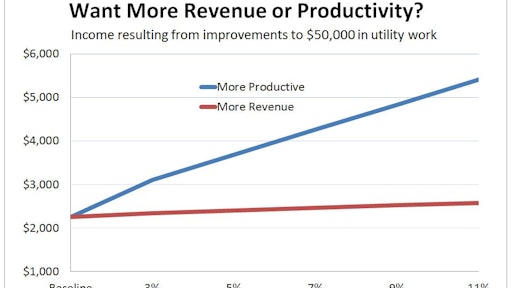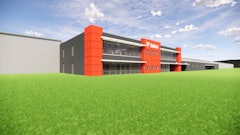
You can’t fault an entrepreneur for focusing on bringing in more revenue. But if you already have some revenue, it’s important to keep the hunt for more in perspective with the much larger income opportunity available from increased jobsite productivity.
The concept is hardly controversial. The income a contractor earns is a small fraction of each additional dollar of revenue, after the costs of producing the additional work. But the sheer magnitude of the benefit that comes from improved productivity is often underestimated.
First of all, productivity improves your costs, rather than being subject to them. And increased productivity works directly on any project’s biggest cost: labor.
Construction consultant and investment banker, FMI, averages utility-contract labor at just over 40% of job revenue. Added to materials costs (just over 20%), equipment costs (15.6%) and subcontractors (4.1%), costs of goods sold eat up to 82% of the average utility contract’s revenue stream.
FMI figures operating expenses at 12% and interest expense at 1.5%, for an average pretax margin for utility construction of 4.5%.
At a media event hosted by Vermeer, FMI President W. Chris Daum illustrated the point with an example worked on $50,000 worth of utility construction work. The average costs of producing utility work brings $2,250 to the contractor’s bottom line. A 10% increase in revenue delivers $300 more pretax income.
In contrast, increasing productivity 5% on that first $50,000 worth of work – reducing just labor and equipment costs by 5% – boosts the bottom line $1,435.
A 10% increase in revenue lifts income by 13%. A 5% increase in productivity launches income nearly 65%.
Running some different changes in productivity and revenue against FMI’s sample $50,000 in utility business, we find you would have to bring in 29% more revenue to equal the income effect of a 3% improvement in jobsite productivity.
Of course you have to start with revenue. But once you have work to do, unless you’re running a truly world-class field operation, it’s important to plan your days remembering that productivity delivers vastly better financial results than increases in revenue.

![[VIDEO]FMI Sees Infrastructure Construction Growth Potential in Many US Sectors](https://img.forconstructionpros.com/files/base/acbm/fcp/image/2015/07/default.55a401d973f81.png?auto=format%2Ccompress&fit=crop&h=75&q=70&w=75)




























